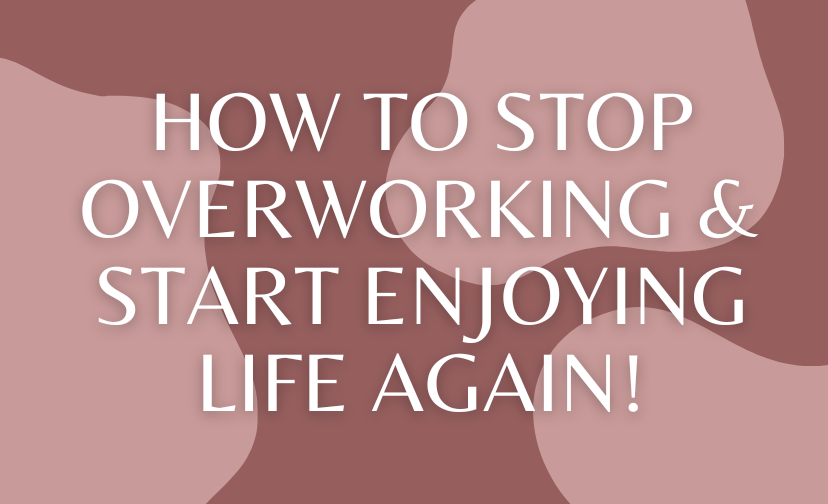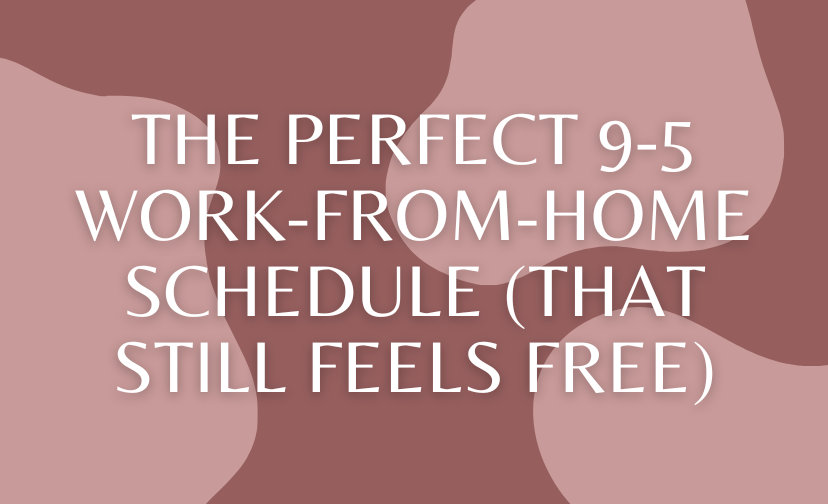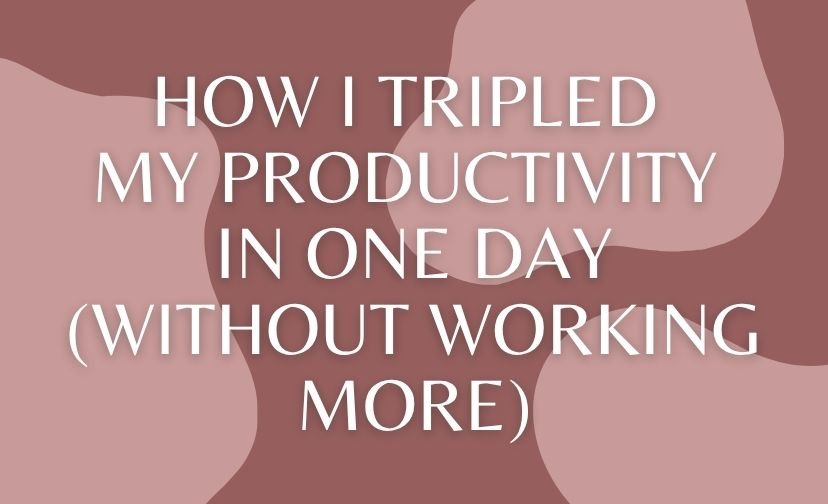Do you ever feel like a hamster on a wheel, running endlessly but getting nowhere? In today’s fast-paced world, the struggle to stop overworking is more real than ever. Many of us find ourselves caught in the relentless cycle of work, neglecting the very essence of life itself.
But here’s the good news: it’s possible to break free and rediscover what truly matters. This guide will explore practical steps to help you regain control, enjoy life, and nurture a healthy work-life balance. Together, we’ll delve into strategies that promise not just a life of productivity but one filled with joy and fulfilment.
Understanding the Overwork Trap
Overworking often sneaks up on us like a thief in the night, stealing our time, energy, and peace of mind. It’s crucial to recognise the signs before it becomes an overwhelming burden. But why do we fall into this trap? Let’s dive deeper.
The Signs You’re Overworking
Identifying the signs of overworking is the first step toward reclaiming your life. Are you constantly exhausted, even after a full night’s sleep? Perhaps your weekends are spent recovering rather than enjoying.
These are just a few indicators that your work-life harmony is out of sync. Chronic stress, irritability, and a dwindling social life often follow suit, leaving you feeling trapped in a cycle of perpetual exhaustion.
Moreover, overworking can manifest in physical symptoms like frequent headaches, muscle tension, and even digestive issues. These are your body’s alarm bells, urging you to step back and reassess your priorities.
Ignoring these signals can lead to burnout, a state of emotional, physical, and mental exhaustion that diminishes your sense of accomplishment and identity.

Why We Fall into the Overwork Cycle
The reasons behind our tendency to overwork are as varied as complex. For some, it’s the pursuit of success and recognition driven by societal expectations and personal ambitions.
For others, it might be financial pressures or the fear of job insecurity. Whatever the reason, the result is often the same—a relentless cycle that seems impossible to break.
In many cases, technology plays a significant role. The constant connectivity provided by smartphones and laptops blurs the lines between work and personal life, making it challenging to switch off. This digital leash keeps us tethered to our tasks, even during moments meant for relaxation and leisure.
One effective way to combat overworking is to establish a clear end-of-day routine. Set a specific time to stop working each day and stick to it. Use this time to unwind and engage in activities that bring you joy. By creating a boundary between work and personal time, you can reduce stress and improve your overall well-being.
The Importance of Work-Life Balance
Achieving a harmonious work-life balance is not just a luxury—it’s a necessity for a fulfilling life. It’s about finding that sweet spot where career and personal life coexist harmoniously. This balance is the cornerstone of happiness and productivity, allowing you to thrive in all areas of life.

What is Work-Life Balance?
Work-life balance is the equilibrium between professional responsibilities and personal activities. It’s the art of juggling career demands with the joys of family, hobbies, and relaxation. A balanced life doesn’t mean dividing time equally between work and leisure; rather, it involves prioritizing what matters most at any given moment.
Imagine life as a symphony where different instruments represent various aspects of your existence. When played in harmony, they create a beautiful melody. Similarly, when work and life are balanced, you experience a sense of fulfilment and contentment.
Benefits of Achieving Balance
The benefits of achieving a healthy work-life balance extend beyond personal satisfaction. It leads to increased productivity, improved mental health, and enhanced relationships. When you’re not overwhelmed by work, you have the energy and creativity to excel in your career while nurturing meaningful connections with loved ones.
- Reduced Stress: Balance helps alleviate stress, promoting better mental health.
- Improved Focus: A balanced life enhances concentration and decision-making skills.
- Greater Satisfaction: Finding time for passions and relationships increases life satisfaction.
Ultimately, a balanced life empowers you to pursue your passions and achieve personal growth, leading to a richer, more meaningful existence.

Practical Strategies to Stop Overworking
Breaking free from the overwork cycle requires actionable strategies that empower you to regain control. Let’s explore how setting boundaries, prioritizing self-care, and learning to say no can transform your life.
Setting Boundaries at Work
Establishing boundaries is a powerful way to protect your time and energy. Start by communicating your limits clearly with colleagues and supervisors. Let them know when you’re available and need uninterrupted time for personal pursuits. This transparency fosters respect and understanding in the workplace.
Consider using tools like email autoresponders to manage expectations and avoid the pressure of immediate responses. Create a designated workspace at home to separate professional tasks from personal activities.
By setting these boundaries, you create a buffer that prevents work from encroaching on your personal life.
To effectively set boundaries, practice saying no to tasks that don’t align with your priorities. Politely decline additional work when you’re already stretched thin. Remember, saying no is not a sign of weakness; it’s a declaration of self-respect and a commitment to maintaining your well-being.
Prioritizing Self-Care and Downtime
Self-care is not an indulgence; it’s a necessity. Prioritizing self-care means dedicating time to activities that recharge your mind, body, and spirit. Whether it’s a morning yoga session, a leisurely walk in nature, or reading a book, self-care is a vital component of a balanced life.
Downtime, too, is essential. Allow yourself moments of rest and relaxation without guilt. Embrace the concept of doing nothing as a way to rejuvenate and reset. When you prioritize self-care and downtime, you return to work with renewed focus and energy.

Learning to Say No
Saying no can be challenging, especially if you’re accustomed to taking on every task that comes your way. However, learning to say no is a crucial skill in maintaining balance. It allows you to protect your time and focus on what truly matters.
Start by evaluating your commitments and identifying areas where you can scale back. Practice assertiveness by expressing your limitations kindly yet firmly. Remember, every time you say no to something that drains you, you’re saying yes to something that fulfills you.
| Strategy | Benefits |
|---|---|
| Setting Boundaries | Protects time and energy, fosters respect |
| Prioritizing Self-Care | Recharges mind, body, and spirit |
| Learning to Say No | Focuses on meaningful commitments |
Rediscovering Joy in Life
Life is meant to be enjoyed, not endured. Rediscovering joy is about reconnecting with the activities and people that bring you happiness. It’s about finding the spark that lights up your soul and makes life worth living.
Finding Hobbies and Passions Again
Remember the hobbies and passions you once loved but abandoned in the hustle of life? It’s time to rekindle those flames. Whether it’s painting, gardening, or playing a musical instrument, engaging in activities you love brings immense joy and satisfaction.
Hobbies offer a creative outlet and a sense of accomplishment that work often can’t provide. They allow you to explore new facets of your personality and discover hidden talents. By dedicating time to your passions, you infuse your life with excitement and purpose.
To rediscover your passions, make a list of activities that once brought you joy. Choose one to reintroduce into your routine. Dedicate a specific time each week to engage in this activity. Over time, you’ll find yourself eagerly looking forward to these moments of joy.

Building Meaningful Relationships
Human connections are the lifeblood of a fulfilling life. Building meaningful relationships requires time, effort, and genuine interest. Reach out to friends and family, and nurture these bonds with regular communication and quality time together.
Engage in activities that foster connection, such as shared meals, game nights, or weekend getaways. These experiences create lasting memories and strengthen the emotional ties that enrich your life. By investing in relationships, you build a support network that uplifts and inspires you.
Reducing Stress Effectively
Stress is an inevitable part of life, but it doesn’t have to control you. Reducing stress effectively involves adopting techniques that promote relaxation and well-being. From mindfulness practices to physical activity, there are numerous ways to keep stress at bay.
Mindfulness and Relaxation Techniques
Mindfulness is being fully present at the moment, without judgment. It involves paying attention to your thoughts, feelings, and surroundings. Mindfulness meditation, deep breathing exercises, and progressive muscle relaxation are powerful techniques to reduce stress.
By incorporating mindfulness into your daily routine, you cultivate a sense of calm and clarity. This practice helps you manage stress by shifting your focus from worries to the present moment. Over time, mindfulness becomes a valuable tool for navigating life’s challenges with grace.

Physical Activity as Stress Relief
Physical activity is a natural stress reliever that boosts mood and energy levels. Whether it’s a brisk walk, a dance class, or a workout session, exercise releases endorphins that promote happiness and relaxation.
Incorporate physical activity into your daily routine to combat stress effectively. Choose activities you enjoy, which increases the likelihood of sticking with them. Regular exercise not only reduces stress but also improves overall health and well-being.
Inspiring Stories of Change
Real-life stories of transformation inspire and motivate us to take action. Hearing about others overcoming the challenges of overworking can provide valuable insights and encouragement on your journey.
Real-Life Examples of Overcoming Overwork
Consider the story of Sarah, a corporate executive trapped in the overwork cycle. Her relentless pursuit of success left her exhausted and unfulfilled. With determination, Sarah implemented strategies like setting boundaries and prioritizing self-care. Over time, she regained control and discovered a newfound zest for life.
Then there’s John, a freelance writer who struggled with saying no to clients. By learning to assert his limits, John could balance his workload and rediscover his passion for writing. These stories remind us that change is possible and a balanced life is within reach.

Lessons Learned from Those Who’ve Been There
Those who’ve successfully navigated the journey to stop overworking often share common lessons. First, they emphasize the importance of self-awareness—recognizing the signs of overwork and taking proactive steps to address them. Second, they highlight the power of community and support systems in fostering resilience.
Finally, these individuals stress the value of perseverance. Change takes time and effort, but the rewards are worth it. By learning from their experiences, you can gain valuable insights and avoid common pitfalls on your own journey to balance.
Taking Action: Your Journey to Enjoy Life Again
Embarking to enjoy life again requires a personalized action plan and a commitment to staying motivated. By taking intentional steps, you can transform your life and create a future filled with joy and fulfilment.
Creating a Personalized Action Plan
A personalized action plan serves as a roadmap for your journey to stop overworking. Start by identifying your goals and the changes you wish to make. Break these goals into manageable steps and set realistic timelines for achieving them.
Regularly review and adjust your action plan as needed. Celebrate small victories along the way, as they serve as motivation to keep going. By creating a clear plan, you empower yourself to take control of your life and achieve the balance you desire.

Staying Motivated on Your Journey
Motivation is the driving force behind lasting change. To stay motivated, surround yourself with positive influences and reminders of why you embarked on this journey. Create a vision board or journal to document your progress and reflect on your achievements.
Engage in activities that inspire and energize you, whether it’s reading motivational books, attending workshops, or connecting with like-minded individuals. By nurturing your motivation, you ensure that your journey to balance remains a priority.
To maintain motivation, regularly revisit your goals and remind yourself of the benefits of a balanced life. Visualize the positive impact these changes will have on your well-being and happiness. By focusing on the end result, you reinforce your commitment to the journey.
In conclusion, the journey to stop overworking and enjoy life again is both challenging and rewarding. By understanding the overwork trap, prioritizing balance, and implementing practical strategies, you can create a life that is not only productive but also joyful and fulfilling.
Embrace this opportunity to rediscover what truly matters and live a life that reflects your values and aspirations.





